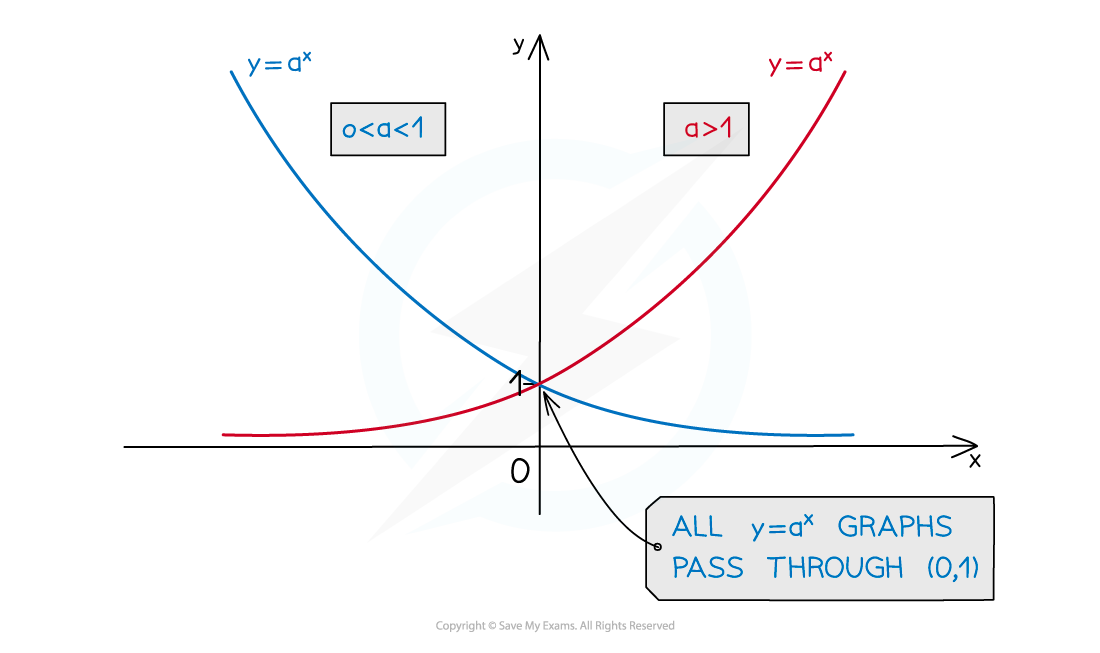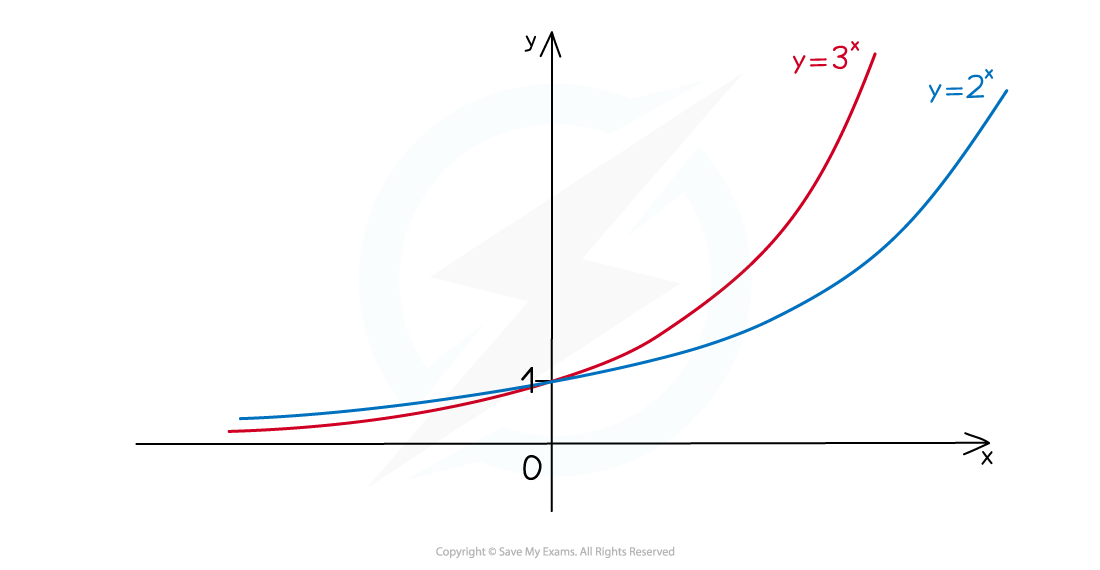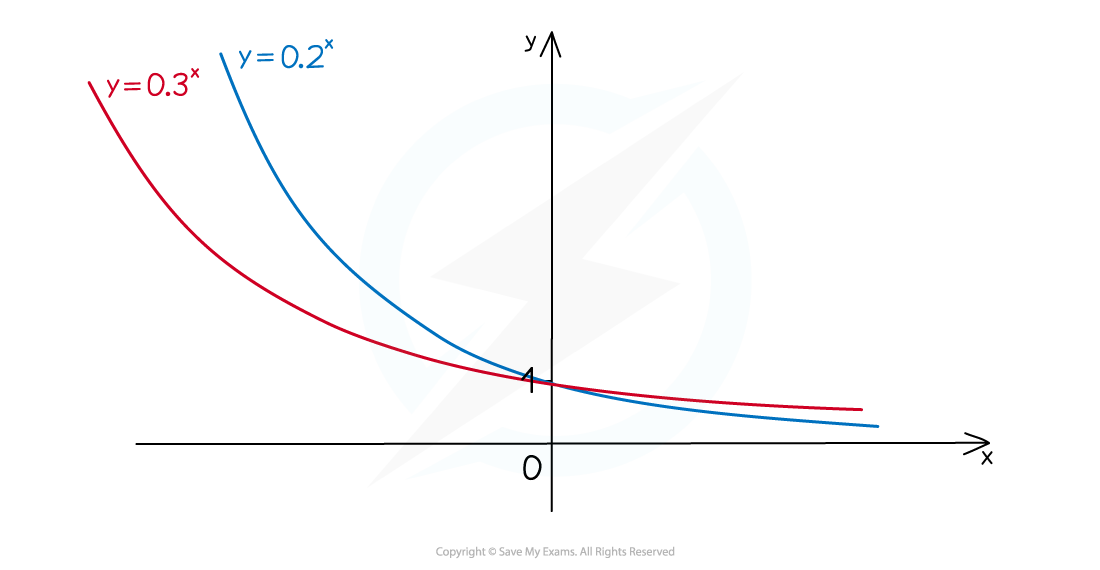Exponential Functions (Edexcel IGCSE Further Pure Maths) : Revision Note
Exponential Functions & Graphs
What is an exponential function?
An exponential function is of the form
Its domain is the set of all real numbers
Its range is the set of all positive real numbers
An important exponential function is
e is the mathematical constant
See the following note on "
" for more details
What are the key features of exponential graphs?
The graphs have a
-intercept at
Because
The graph will always pass through the point
Because
The graphs do not intersect the
-axis
The graphs have a horizontal asymptote at the x-axis
The graphs do not have any minimum or maximum points

When
For
the higher value of
is the “lower” graph
Where
the higher value of
is the “higher” graph

When
Where
the higher value of
is the “lower” graph
Where
the higher value of
is the “higher” graph

When
The graph is a horizontal line through
Because
for all values of
Worked Example
On the same set of axes, sketch the graphs of and
.
Both graphs will have the 'typical' exponential shape for the
case
will be the 'lower' graph for
,and the 'higher' graph for
Both graphs go through and have an asymptote at the
-axis

"e"
What is e, the exponential constant?
is one of the most important mathematical constants
is an irrational number
is often referred to as 'the exponential function'
As with other exponential graphs,
passes through
has the
-axis as an asymptote

Why is e so important?
has the particular property that
i.e. if
, then
is also equal to
This means that for every real number
, the gradient of
is also equal to


The negative exponential graph
is a reflection in the
-axis of
Note by laws of indices that
They are of the form
and

Worked Example
On the same set of axes, sketch the graphs of ,
and
.
By laws of indices,
, so
will be the 'lower' graph for
,and the 'higher' graph for
is the reflection of
in the
-axis
All three graphs go through and have an asymptote at the
-axis


You've read 0 of your 5 free revision notes this week
Unlock more, it's free!
Did this page help you?

